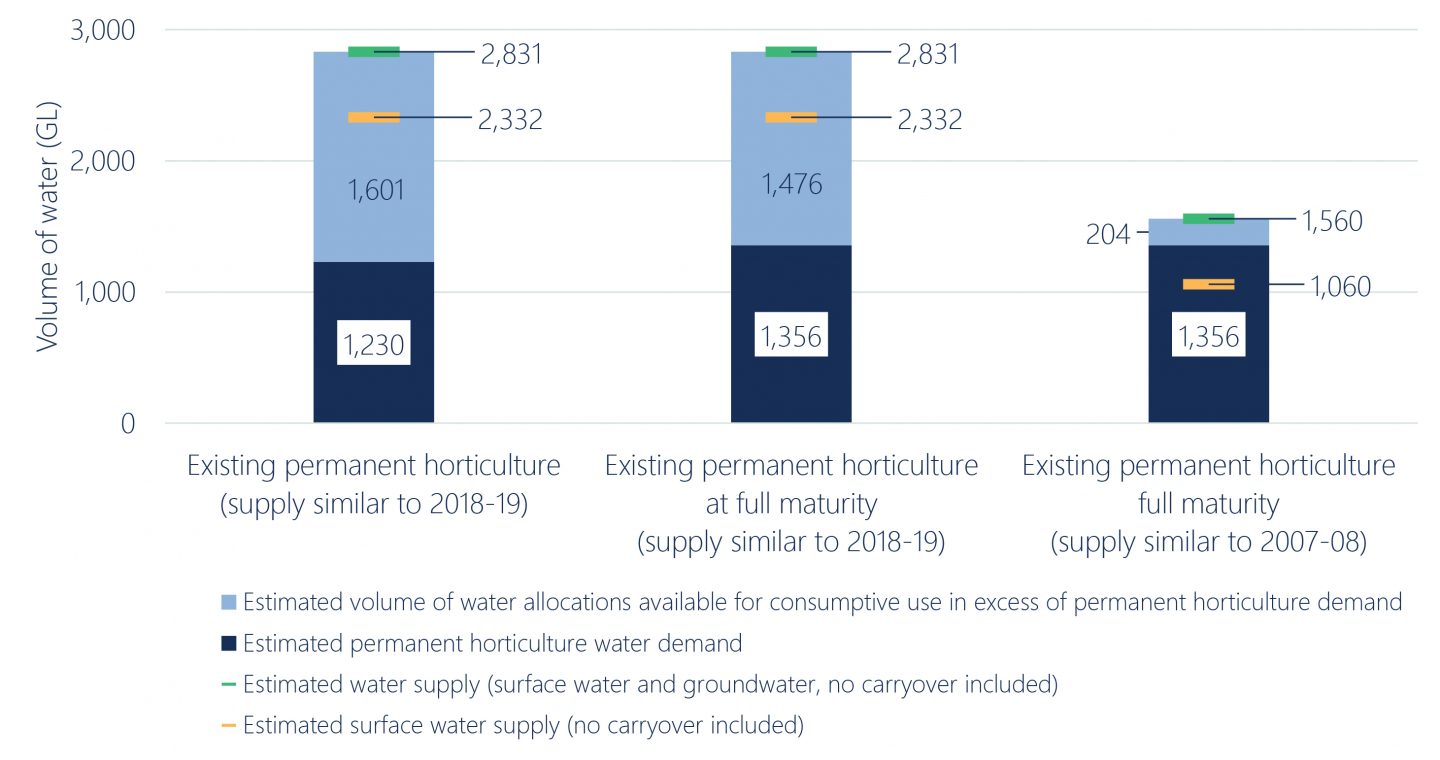Fundamental changes to supply and demand in the southern MDB are placing unprecedented pressures on water resources and market participants.
In the absence of any demand-side response, Aither found that water demand from existing permanent horticultural plantings could increase by 125 GL once they reach full maturity; compared to 2018-19 demand of approximately 1,230 GL.
If this happens in a year with water supply conditions similar to 2018-19 (2,831 GL), across the connected Murray and Goulburn systems there will be plenty of water in excess of demand from permanent horticulture. But, if this happens, in an extreme dry year with similar water supply conditions to 2007-08 (1,560 GL, surface water and groundwater), there may only be a small volume of water in excess of permanent horticulture demand across the connected Murray.
Generally, viable groundwater sources in the connected Murray region do not geographically overlap with existing permanent horticultural demand (in the lower Murray). So, if only surface water supply is considered, demand from existing permanent horticulture may exceed the total volume of water available for consumptive use by approximately 300 GL.
Our latest analysis draws attention to the potential for tight water supply and demand conditions in the connected Murray and lower Murray regions, particularly under dry and extreme dry conditions.
Water supply scenarios and existing permanent horticulture water demand (at full maturity), connected Murray and Goulburn regions

Note: the demand estimate includes demand from vegetable growing in the Victorian and NSW Sunraysia.

